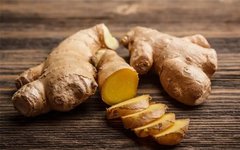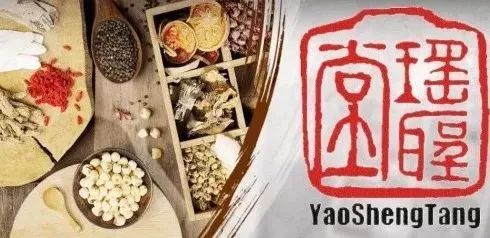
Ginger is not only a seasoning but also an important medicinal material in Yao medicine. The earliest record of ginger as a medicine is found in the “Shennong Bencao Jing” (Shennong’s Classic of Materia Medica), which states that dried ginger (Gan Jiang) “is used for chest fullness, cough, counterflow of qi, warming the middle, stopping bleeding, inducing sweating, expelling wind-dampness, and treating diarrhea.” Over time, many medicinal forms of ginger have been developed, each with different effects. This article introduces how Yao medicine utilizes ginger, following the order of its medicinal use.
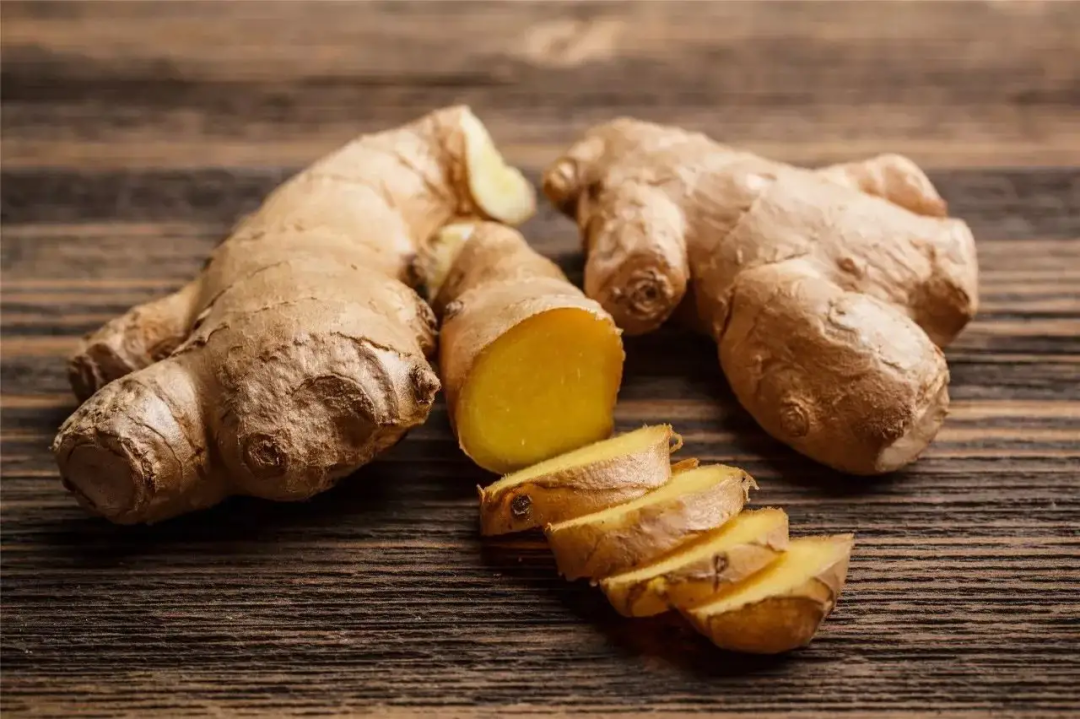

Dried Ginger (Gan Jiang)
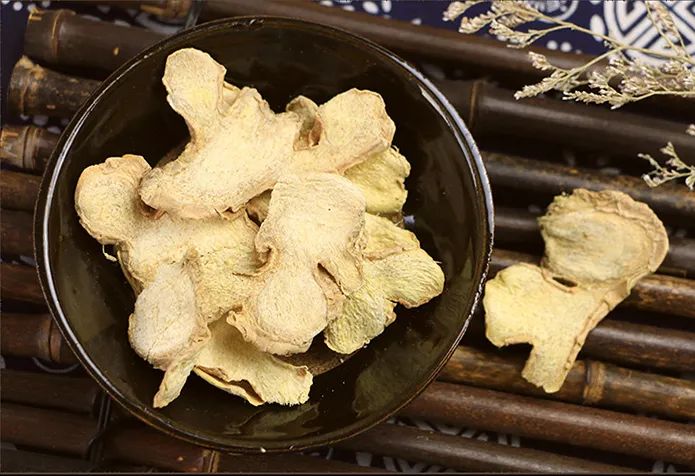
The first is dried ginger, which is first recorded in the “Shennong Bencao Jing.” The effects of dried ginger include warming the middle, dispelling cold, warming yang, unblocking meridians, and warming the lungs to transform phlegm. It is a warming interior medicine,commonly used to treat cold pain in the abdomen, cough with cold phlegm, vomiting, diarrhea, weak pulse, and cold limbs. It is often used in combination with Aconite (Fu Zi). Examples of formulas include: Li Zhong Wan, Aconite Li Zhong Wan, Si Ni Tang, Xiao Qing Long Tang, and Zhu Che Wan.
Li Zhong Wan is derived from the “Shang Han Lun” (Treatise on Cold Damage) and contains ingredients such as Ginseng (Ren Shen), Bai Zhu (White Atractylodes), Honey-fried Licorice (Zhi Gan Cao), and Dried Ginger. Its effects are to warm the middle and dispel cold, tonifying qi and strengthening the spleen. It is used for abdominal pain and diarrhea caused by spleen and stomach deficiency with cold.
Aconite Li Zhong Wan is from the “Taiping Huimin Heji Ju Fang” (Formulas for the People’s Welfare) and includes the hot herb Aconite, enhancing its warming effects. The original text states, “It treats cold weakness of the spleen and stomach, abdominal cramping pain, vomiting, diarrhea, cholera, cold body with slight sweating, cold hands and feet, fullness in the chest, rumbling in the abdomen, persistent vomiting, and inability to eat, as well as all cold and stubborn conditions.” In the Ming Dynasty, Zhang Jingyue added symptoms such as abdominal pain, cold extremities, and food-induced cold.
Si Ni Tang is also derived from the “Shang Han Lun” and contains only Aconite, Dried Ginger, and Honey-fried Licorice. It is a representative formula for rescuing yang and counterflow, addressing yang deficiency with cold extremities. In critical conditions, Si Ni Tang is more effective than wild ginseng.
Li Zhong Wan, Aconite Li Zhong Wan, and Si Ni Tang all utilize the warming and cold-dispelling effects of dried ginger, while Xiao Qing Long Tang, also from the “Shang Han Lun,” employs dried ginger’s warming and phlegm-transforming effects, used for treating exterior wind-cold with internal water and phlegm cough.

Fresh Ginger (Sheng Jiang)
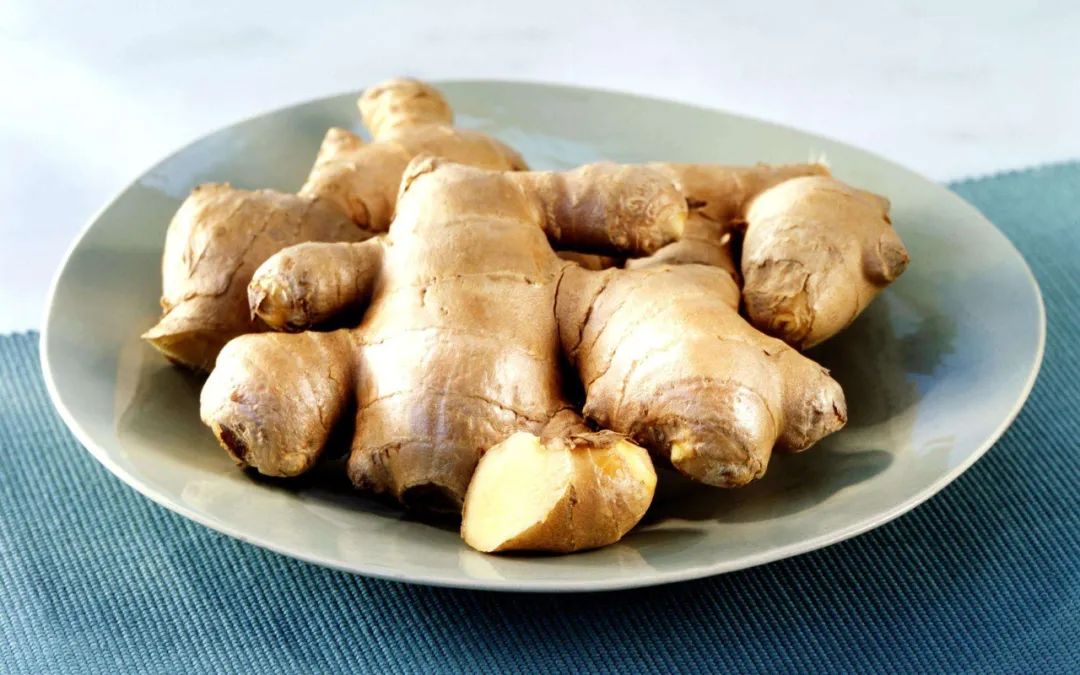
Next, we discuss fresh ginger, which is frequently used in the “Shang Han Lun.” The combination of fresh ginger and jujube is quite common. Later physicians, such as Tao Hongjing, recorded in his “Bencao Biexulu” (Record of Famous Physicians) that: “Fresh ginger, with a spicy and slightly warm flavor, is used for treating wind-cold, headache, nasal congestion, cough with counterflow of qi, and stopping vomiting.” Compared to dried ginger,fresh ginger has a stronger effect in releasing the exterior and dispelling cold, suitable for exterior wind-cold conditions, while dried ginger is better for warming the interior, suitable for middle-jiao spleen and stomach deficiency with cold.
Moreover, fresh ginger can also detoxify fish and crab poison and counteract the toxicity of raw Pinellia (Ban Xia). Fresh ginger and Pinellia are a classic combination. The “Jin Gui Yao Lue” (Essential Prescriptions of the Golden Cabinet) states: “Both Pinellia and fresh ginger juice are effective in stopping vomiting, and their combination is even better; they also have the function of opening the appetite and harmonizing the middle. It is used for disharmony of stomach qi, vomiting, and restlessness.”
The first formula in the “Shang Han Lun,” Gui Zhi Tang, is used for exterior wind-cold and wind evil causing headache, fever, sweating, and aversion to wind, utilizing the combination of fresh ginger and jujube.

Processed Ginger (Pao Jiang)
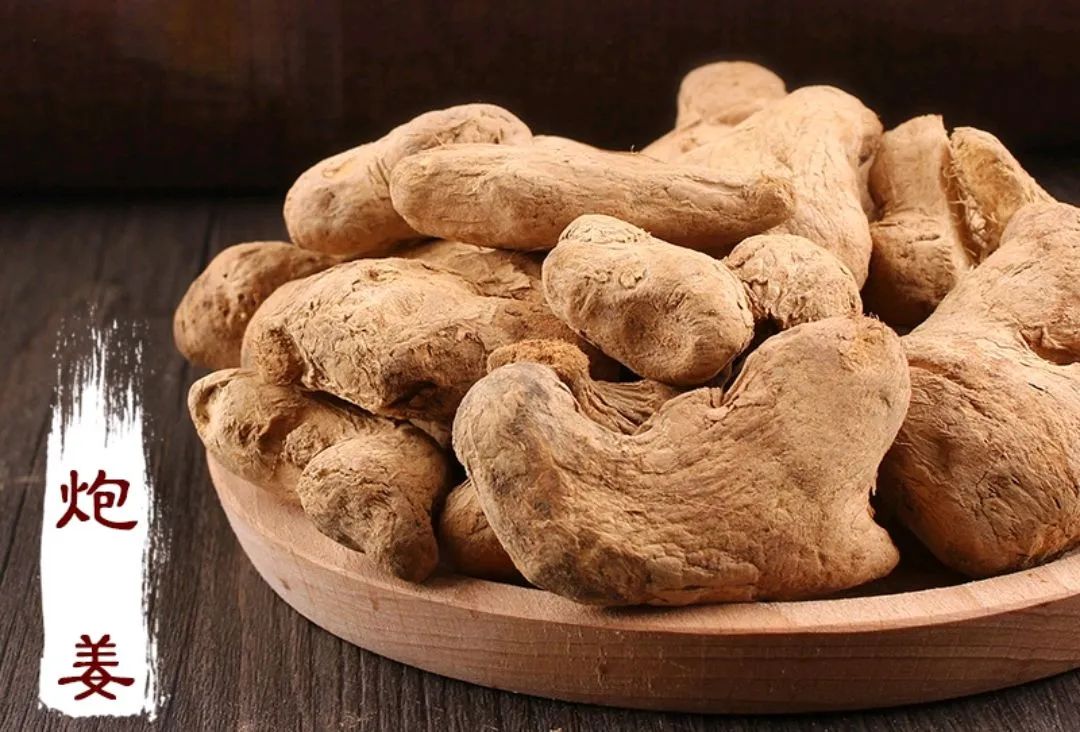
Processed ginger is made by stir-frying dried ginger with hot sand until the surface bulges and turns brown. It is also first recorded in the “Shang Han Lun,”and is hot in nature with a spicy flavor. It enters the spleen, stomach, and kidney meridians. Its effects include warming the meridians and stopping bleeding, as well as warming the middle and alleviating pain. It is mainly used for yang deficiency with blood loss, metrorrhagia, abdominal pain, and vomiting.
The “Jin Gui Yao Lue” records the Licorice and Processed Ginger Decoction, which actually uses processed dried ginger, treating lung deficiency with cold, characterized by expectoration of foamy saliva and frequent urination; absence of cough is a key point for differential diagnosis. The original text states: “Four taels of licorice, two taels of processed dried ginger, stir-fried, with three sheng of water, boil to obtain one sheng and five cups, strain, and take warm in two doses.” Processed dried ginger has a stronger effect in warming yang and maintaining the middle, with a weaker dispersing power than dried ginger.

Ginger Charcoal (Jiang Tan)
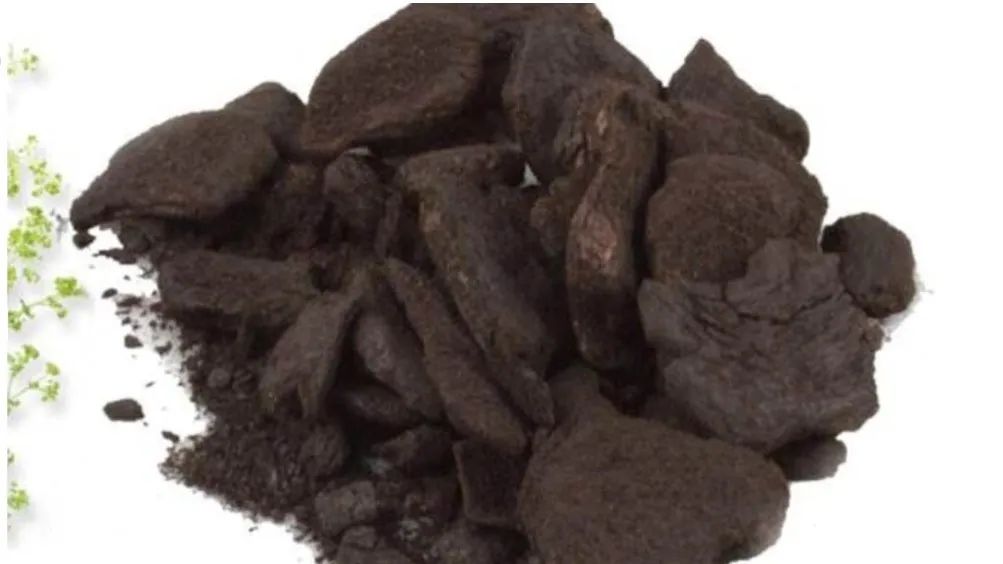
Ginger charcoal was first recorded in the Song Dynasty and is a product formed by frying ginger into charcoal. It is actually a classification of processed ginger, butthe charcoal-fried ginger is more focused on stopping bleeding,as charcoal itself has a significant effect in stopping bleeding.
Regarding ginger charcoal’s hemostatic properties, many physicians throughout history have discussed it. For example, the “Bencao Jing Shu” states, “The mention of stopping bleeding refers to blood deficiency causing heat; heat causes reckless movement. Charcoal-fried ginger can guide various blood-tonifying herbs into the yin aspect, and when blood is replenished, yin is generated, and heat recedes, preventing blood from recklessly moving.”
The “National Standard for the Processing of Chinese Medicinal Herbs” also requires that ginger charcoal be distinguished from processed ginger: “Ginger charcoal warms the meridians and stops bleeding, primarily treating vomiting blood, metrorrhagia, and blood loss due to yin deficiency.”

Galangal (Gao Liang Jiang)
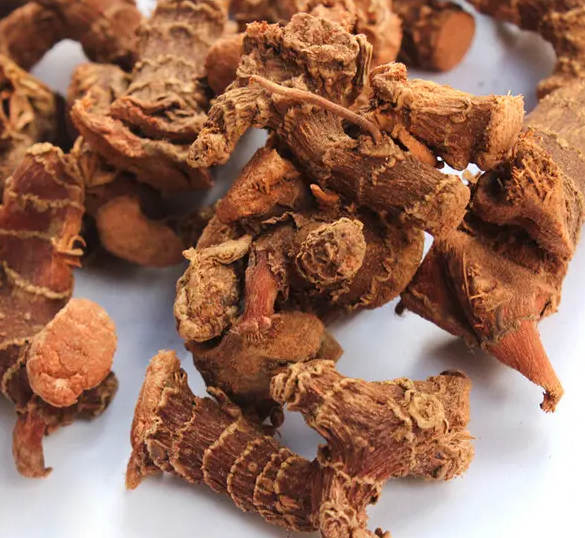
Galangal is not technically a product of dried ginger, as it comes from the galangal plant,and is hot in nature with a spicy flavor. Its effects include warming the stomach, dispelling cold, alleviating pain, and stopping vomiting. Galangal was first recorded in Tao Hongjing’s “Bencao Biexulu” and is considered a good warming medicine for the stomach. The “Biexulu” states, “It is warm in nature and is used for sudden cold, cold counterflow in the stomach, and cholera abdominal pain.”
Summary: Fresh ginger, dried ginger, and processed ginger gradually increase in warming effects while decreasing in cold-dispelling effects. Ginger charcoal focuses on warming the meridians and stopping bleeding. Although galangal is a close relative, its main effects are similar to dried ginger, but galangal emphasizes warming and dispelling cold, while dried ginger focuses on rescuing yang and counterflow. Galangal is more potent and should not be used for extended periods, which is why it is classified as a medium-grade herb by Tao Hongjing, while dried ginger is considered a superior herb.
👇Scan the mini-program below to quickly enter the mall and take a look!👇
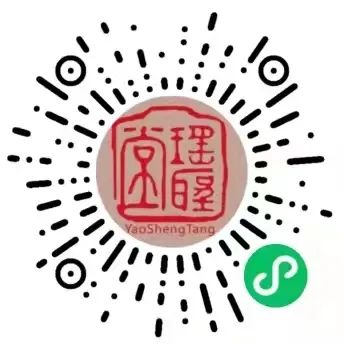
“This article has been scientifically reviewed by Huang Ruishen, the eighth-generation Yao physician and founder of Yao Sheng Tang.”
Want to learn more about health and wellness knowledge?
Quickly scan the QR code below!
For online consultations, long press to scan the QR code below↓↓, follow the official account to learn more health knowledge, and leave a message in the background for【professional medical team to answer your questions one-on-one, and also forcustomized health care and free wellness lectures. Don’t hesitate to scan!~

“With Yao Sheng Tang at home, you and I are healthier.”
Service tenet: Do things with heart, be kind like Buddha.
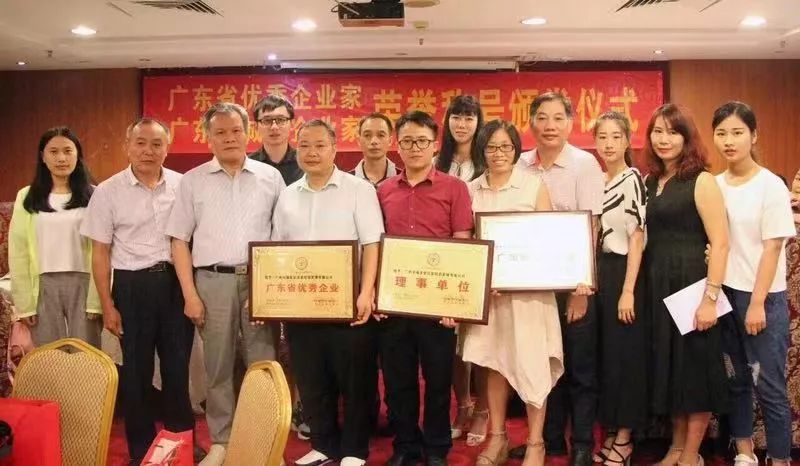
“Disclaimer”
The purpose of this article is to provide general health information and cannot replace any personal medical diagnosis and treatment. Personal medical issues should be discussed and consulted with a physician. For any suggestions regarding this popular science article, please follow the official account and leave a message.

